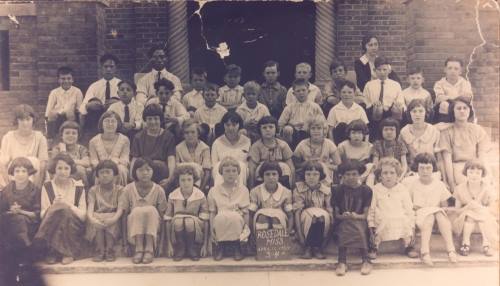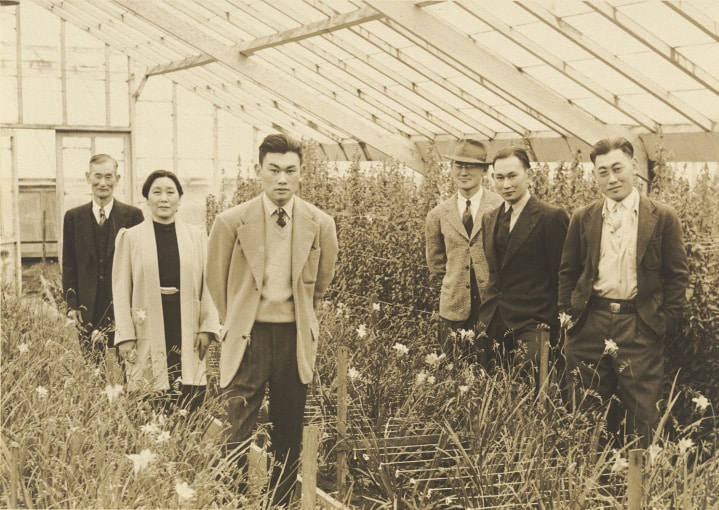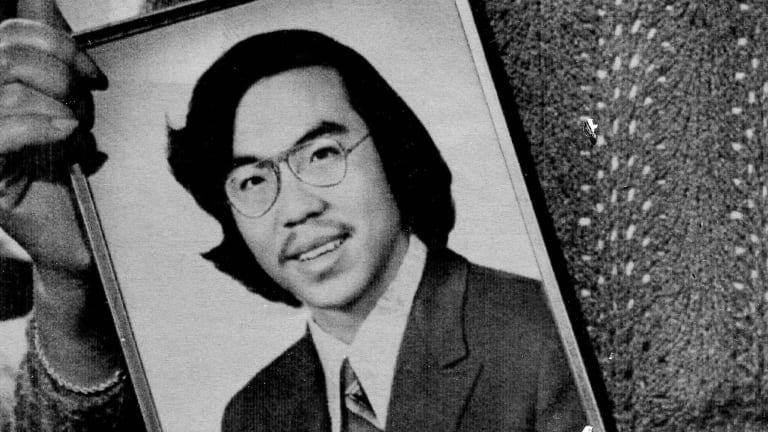 Teaching about Asian Pacific Americans was created for educators and other practitioners who want to address the void in Asian American history in the textbooks. Experts in the field of Asian American Studies will find powerful, innovative teaching activities that clearly convey established and new ideas.
Teaching about Asian Pacific Americans was created for educators and other practitioners who want to address the void in Asian American history in the textbooks. Experts in the field of Asian American Studies will find powerful, innovative teaching activities that clearly convey established and new ideas.
The activities in this book have been used effectively in workshops for staff and practitioners in student services programs, community-based organizations, teacher training programs, social service agencies, and diversity training. [Publisher’s description.]
List of Contributors
Allan Aquino, Asian Pacific American Legal Center, Wayne Au, Christina Ayala-Alcantar, Eiichiro Azuma, Carl L. Bankston III, Dharm P. S. Bhawuk, Edith Wen-Chu Chen, Michi Fu, Joseph A. Galura, Amir Hussain, Kimiko Kelly, James Lam, Mariam Beevi Lam, Emily Porcincula Lawsin, Andrew Leong, Sin Yen Ling, Sheena Malhotra, Gina Masequesmay, Michael Matsuda, Vijayan P. Munusamy, Ajay T. Nair, National Asian Pacific American Legal Consortium, Glenn Omatsu, Orange County Asian and Pacific Islander Community Alliance, Tony Osumi, Steven Masami Ropp, Aimee Carrillo Rowe, Sweatshop Watch, Daniel Hiroyuki Teraguchi, Masaru Torito, Diep Tran, Haunani-Kay Trask, Vivian Tseng, Maria Mami Turnmeyer, George Uba, Laura Uba, W. David Wakefield, Grace J. Yoo, and Min Zhou.
About the Editors
Edith Wen-Chu Chen is associate professor in the Asian American studies department at California State University, Northridge. Her interests include race and ethnicity, Asian American women, intercultural communication, and Asians in the Americas.
Glenn Omatsu is senior lecturer in Asian American studies and faculty mentor program coordinator for the Educational Opportunity Program at California State University, Northridge. He is co-editor (with Steve Louie) of Asian Americans: The Movement and Moment.
Reviews
This book should be required reading for anyone who teaches a class on the nation’s rapidly growing and immensely diverse Asian Pacific American population, or more generally on ethnic and racial groups in America. Experienced instructors, as well as those who are teaching for the first time, will benefit greatly from the array of innovative, exciting, and ‘best practices’ classroom activities and strategies that are featured in this collection. This is more than a ‘how to’ book. It provides a compelling perspective on how the historical and contemporary experiences of all immigrant and minority groups can and ought to be taught in the twenty-first century. —Don T. Nakanishi, University of California, Los Angeles
This collection is interdisciplinary in scope, encompassing a variety of social science disciplines including sociology as well as humanities and professional education. —Teaching Sociology
Table of Contents
Introduction
Part One: Definitions, Concepts, and Issues
Chapter One: Vietnamese Boat People: Separation and Loss
Straddling Two Social Worlds: The Experiences of Vietnamese Refugee Children in the United States
An Oral History of Huy Tran: A Vietnamese American Refugee’s Story
Chapter Two: Feast of Resistance: Asian American History Through Food
What is Chick-Sexing?
Chapter Three: Food and “Pin@y Time”: Mapping the Filipino American Experience
Timeline of Filipino American History
Chapter Four: Deconstructing the Model Minority Image: Asian Pacific Americans, Race, Class, Gender and Work
Southeast Asian Refugees Groups and the Barriers They Face
Chapter Five: Building Allies: Linking Race, Class, Gender and Sexuality in Asian American Studies
Alan’s Story: Female-to-Male Transexual Straight Man
Chapter Six: Globalization and Transnationalism Role-Playing Activity: Korean Immigrants and the Garment Industry
Globalizations’ “Race to the Bottom” Creates Sweatshops
Sweatshops in Our Backyards
A Los Angeles Garment Worker’s Experience
Chapter Seven: Expressive Therapies for Asian American Clients: The Value of Nonverbal Sand Tray Therapy
Chapter Nine: Representations of Asian Americans in Advertising: Constructing Images of Asian Americans
Chapter Ten: Ripping Up Culture: Helping Students Reconnect with Their Cultural Values
Part Two: War, Colonialism, and Imperialism
Chapter Eleven: Paradise and the Politics of Tourist Hawai’i
From a Native Daughter: Colonialism and Sovereignty in Hawai’i
Chapter Twelve: Racializing the “Enemy”: Japanese Americans after 12/7/41 and American Muslims and Arabs after 11/9/01
After September 11, 2001: An Asian Pacific American Perspective
Chapter Thirteen: Teaching about Muslims and Hindus in the USA: “And all they will call you will be deportee”
Hate Crimes Immediately after September 11, 2001
Chapter Fourteen: On the Cursings and Blessings of War: Discussions for a Filipino American Experience Class
Filipinos and the “Negritos Americanos”: Empire and Racial Bonds
Chapter Fifteen: Addressing Redress: Japanese Americans Reparations for Their Internment During World War II
Part Three: Community Building, Learning, and Organizing
Chapter Sixteen: Making Student Leadership Development an Integral Part of Our Classrooms
Chapter Seventeen: Beyond the Egg Roll, Fortune Cookies and Paper Fans: Seeing the Residential SIde of Chinatown
Chapter Eighteen: Mobilizing Students to Respond to Community Needs—Organizing a Class around a Community Project
Chapter Nineteen: Bridging Generations: Bringing the Experiences of Illness, Health, and Aging into the Classroom
Chapter Twenty: Oral History and Multiculturalism
Chapter Twenty-One: Bridging Asian American and African American Communities
Chapter Twenty-Two: Political Tours of Our Communities: Linking “Book Knowledge” with “Lived Experiences”
Part Four: Critical Thinking Teaching Strategies
Chapter Twenty-Three: Understanding Privilege in American Society
Chapter Twenty-Four: An Exploration of Meaning: Critically Thinking about History
Chapter Twenty-Five: Generative Thinking: Using a Funding Proposal to Inspire Critical Thinking
Chapter Twenty-Six: Promoting Transgressions through the Automatic Reward System in the Literature Course
Chapter Twenty-Seven: What’s Wrong with a Colorblind Perspective: A New Model of Critical Caring for Teachers
Chapter Twenty-Eight: Modeling Whiteness: Minorities, Assimilation and Resistance
Part Five: Resources
Chapter Twenty-Nine: Web Resources for Teaching Asian American Studies
About the Editors
About the Contributors
Index
ISBN: 9780742553385 | Rowman & Littlefield Publishers




















Twitter
Google plus
LinkedIn